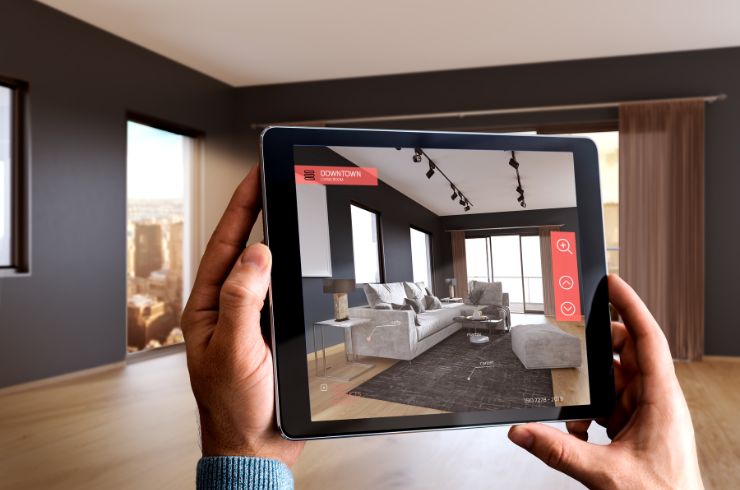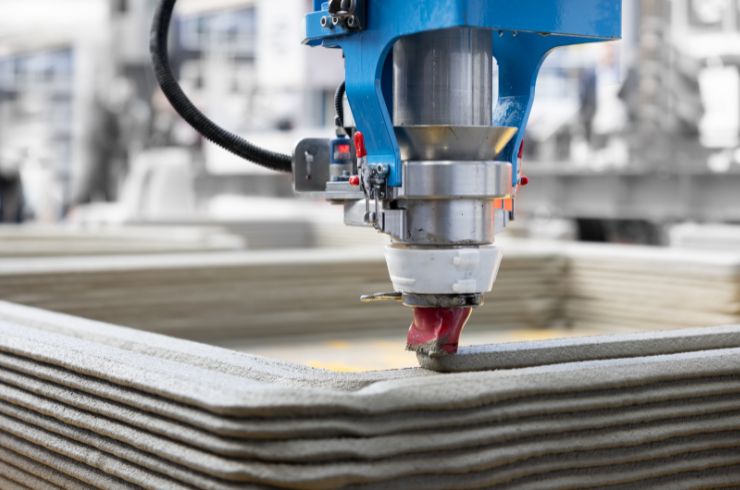As we head into the future of crucial environmental acts, green materials for building are the most significant natural resources to put to use. Architects and interior designers nowadays relish showcasing eco-friendly materials for building in their brilliant work by applying the principles of sustainability in interior design.
The construction process includes vital steps to ensure an efficient, beneficial superstructure. An aesthetically pleasing eco-conscious design features healthy gains at a low cost; in the comfort of aware and environmentally conscious dwellings, individuals can resort to abundant living integrating safety measures such as; insulation, thermal and noise reduction, and diminishing pollution.
Implementing Cradle-to-cradle building practices, interior designers make the best of both worlds, asserting an appealing structure with a dependable frame and modern ornaments.
In this article, we will address why sustainability in interior design is essential and what are green building supplies and materials. We will also explore what sustainable building materials in construction are.
What Are Green Building Materials?
Green building materials are green materials for building and earthly elements; they are recycled and collected from renewable substances. They have little environmental impact and are purely natural, sustainable, and adaptable to climate change.
Top 15 Most Eco-Friendly Construction Materials
The following is a list of green materials for building for the interior designer to consider in sustainable projects:
1. Bamboo
Commonly used and popular option among green materials for building; easy to harvest and grows rapidly, with an estimated three feet of growth within a day. Bamboo is a perennial plant, which means they perpetually grow. It is durable and has great endurance. It is almost imperishable and is a suitable low-cost choice for cabinets, bridges, and panels.
2. Precast Concrete Slabs
Another affordable eco-friendly material is precast concrete slabs, which consume lesser energy to assemble. Typically processed to contain large air spaces, concrete slabs are treated and cured to prevent cracks and structural errors. Concrete slabs are used for green roof technology and floor tiles and are pliable for different types of weather.
3. Cork
Easy to harvest and with a quick growth rate, cork can be collected from tree bark. This water-resistant, resilient, and flexible material sustains tremendous amounts of pressure. Architects and interior designers often choose cork for its noise absorption qualities. Cork flooring has a unique capacity for shock absorption, is fire-resistant, and emits low levels of gas, making it an excellent thermal insulator. If you are considering this type of flooring and need financial aid, exploring flooring financing plans contractors suggest can offer an easier way for you to beautify your homes, making sustainable and stylish cork flooring more accessible.
4. Straw Bales
Effortlessly planted and easy to harvest, it has a slight environmental impact. Customarily applied as beams and filling material because it prevents air penetration and has sound-proof and fire-resistance qualities. Versatile, it cools the house during high temperatures and stores heat during winter.
5. Recycled Plastic
Lowering gas emissions and land-fill problems; it is collected from trash and then transformed into concrete. A mixture of regular plastic and recycled plastic is shaped into the timber. Reducing pollution, this form of plastic is implemented in many structures such as roofs, pipes, and other decorations.
6. Reclaimed Wood
Reclaimed wood downgrades lumber stacks in landfills. Belittling forest cut-down. An optimal choice of green building products, available in multiple places, this type of wood is optimal for kitchen islands, accent walls, and bed frames. Different types of wood can be used for various applications depending on their condition. Not very durable, it can degrade; luckily, it can be treated to increase its sustainability.
7. Reclaimed or Recycled Steel
Using recycled steel is an excellent option for low-impact building materials, reinforces the building, and reduces tree cut-down and withstanding earthquakes. Although it consumes a lot of energy to produce, it lowers energy consumption once recycled. Designers incorporate reclaimed steel in building foundations and roof tiles.
8. Plant-based Polyurethane Rigid Foam
Polyurethane Rigid Foam is taken from bamboo and a specific type of kelp; this material is meticulous. When used correctly, it provides insulation. Among many attributes, it acts pesticide-resistant, inhibits noise, and minimizes heat. Popular uses of it include; wind turbines and modern furniture.
9. Sheep’s Wool
Energy efficient and effective for noise reduction. It is a great choice to isolate homes from external elements; With a high regeneration rate, sheep’s wool is a prime choice for carpets and modern curtains. The downside of wool’s treatments is that it undergoes the chemicals used to cure it.
10. Rammed Earth
A mixture of earthly materials, rammed earth is a gravel, lime, and chalk compound. Rammed earth preserves temperatures well; it stores the heat during the day throughout the night. The texture of this particular compact is concrete-like, and it has stronger durability than other wooden materials.
Architects and interior designers use them as sturdy foundations and wall posts. It is affordable and budget-light among green materials for building.
11. Hempcrete
An herbal-based substance extracted from fibers of hemp. This material is firm and, when tightly pressed, forms a strong substance that’s lightweight but as durable as concrete. They preserve a lot of energy and are easy to transport.
They create a great thermal barrier and minimize noise pollution when molded into blocks. It can absorb carbon dioxide, reducing the carbon footprint, and is a fire-resistant and regenerating earthly resource. It is perfect for restoring buildings and floor slabs.
12. Mycelium
A semi-recent discovery, mycelium is fungi based and found in the roots of specific mushrooms. It is a natural resource baked and shaped into brick among variable shapes. Developed through a biological process, it heavily reduces energy consumption; innovatively used, it has proven useful in acoustic absorption and insulation.
Modern uses of it substitute concrete walls and wall slabs. An impressive material that can combat volatile and fluctuating temperatures.
13. Ferrock
Collected and recycled from previous industrial projects, the ferrous rock becomes everlasting and tenacious when formulated into green materials for building. As it cures, it absorbs a hefty amount of CO2, acting as a carbon-neutral material. It is a practical alternative to concrete and cement, perfect for roads and garage entrances.
14. Timber Crete
A recent concoction, blended from sawdust and concrete, is environmentally safe, and the predecessor of concrete slabs, it has lightweight and acts as an energy consumption preserver. Timber composites are largely used in wall panels and floor applications.
15. Terrazzo
Also known as epoxy resin, it is a very fashionable and popular choice, composed of ground granite and marble, with longevity, lasting up to 40 years. Its versatile uses give it an artistic approach, whereas architects and designers paint floors elaborately. Some people use it as countertops or coffee tables. Easy to clean and eye-catching, some recycle it with glass or decorate vast spaces like stadiums.
Conclusion
Green materials for building have become a rather famous trend lately in the world of sustainability in interior design. In environmental conservation, designers and people shifted from being creatures of habit into conscious and responsible individuals.
Designing for tomorrow, people are shifting and taking an interest in renewable materials in construction; cultivating a sense of Zero-waste construction options such as the aforementioned alternative building materials for homes, we can head towards a bright and optimistic state of living that is the ultimate definition of climate-responsive architecture.




